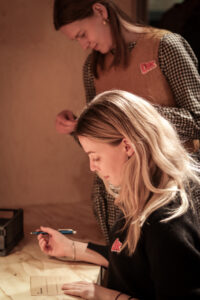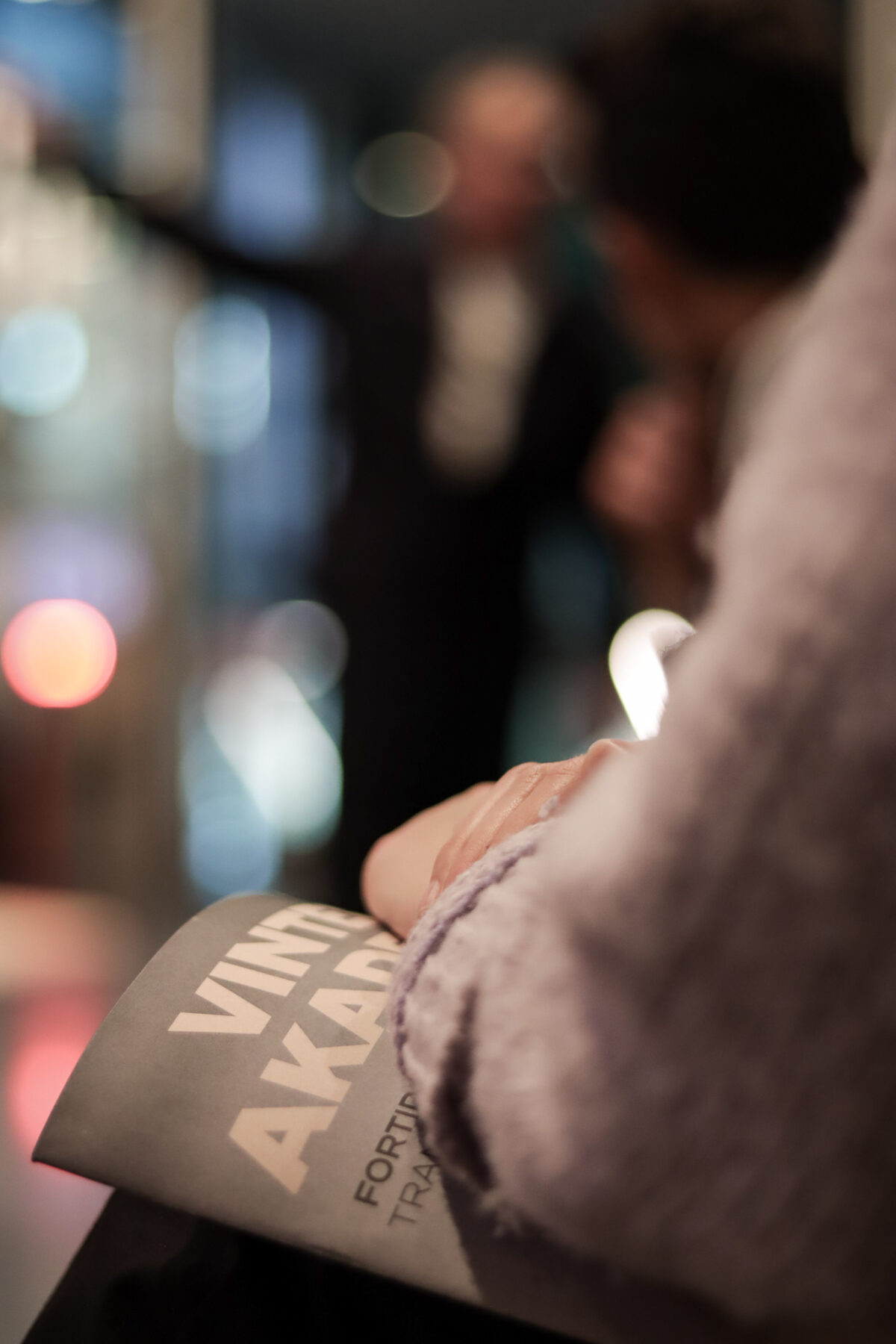This year’s VINTERAKADEMI focused on the social aspect of sustainability, how we can learn from history, and how important communication and interdisciplinary cross-collaboration is if we are to make a sustainable transformation of the built environment.
“Once upon a time, there was a little house. It was a modern house, made from the newest materials, and it was built in a time of hope, a time when everyone believed that you could build your way into the future …”
So begins the first group presentation on the last day of VINTERAKADEMI 2022 (in English: Winter Academy). This is the culmination of a week’s worth of talks, field trips, case studies, discussions, and group work on the theme of how we can use the experiences of the past to create a more sustainable built environment now and in the future.
More than 40 students and young professionals from different disciplines and different parts of the country have gathered in BLOXHUB from March 21 – 25 to immerse themselves in the sustainable agenda and work on group projects.
So how does a fairytale fit into all this?
The Many Aspects of Sustainability
We will get back to the fairytale shortly, but first a little rundown of VINTERAKADEMI 2022 for a bit of context.
During the week, the participants were introduced to many different aspects of both the sustainable agenda and the built environment. The themes of the talks varied from certifications and carbon mitigation to political aspects and tectonics in architecture, and the speakers came from universities, architect studios, thinktanks, and prominent companies and organizations within the Danish built environment.
But one theme, in particular, was very prevalent, namely the social aspect of sustainability. When the participants and speakers discussed sustainability, they did so with reference to three different aspects: the environmental, the economic, and the social. The latter has, within a construction context, not been given as much attention as the two first, but that is beginning to change.
One of the speakers who touched upon this subject was Vibeke Grupe, who is an industrial researcher, architect, and a part of BLOXHUB’s Circular Built Environment Network. By referring to the UN Sustainable Development Goals, she showed how important the built environment is not only for a green transition but also for creating a just society, where the social aspect is key in the way we think about and work with sustainability.
 The author and consultant, Niels Bjørn, also elaborated on the social aspect of sustainability, by looking at how the physical surroundings can affect our wellbeing and the importance of designing for people. By using design and the sensual aspects of materials, the built environment can contribute greatly to making areas that foster connection and high life quality. And this shouldn’t just be accessible to the wealthy – society has a responsibility to ensure that everyone has a good place to live.
The author and consultant, Niels Bjørn, also elaborated on the social aspect of sustainability, by looking at how the physical surroundings can affect our wellbeing and the importance of designing for people. By using design and the sensual aspects of materials, the built environment can contribute greatly to making areas that foster connection and high life quality. And this shouldn’t just be accessible to the wealthy – society has a responsibility to ensure that everyone has a good place to live.
The social aspect of sustainability was also highlighted through the field trips and case studies of the week, which centered on the transformation of public housing buildings in the less central areas of Copenhagen. The cases were accompanied by presentations from the architects and sustainability experts working on them, and there was talk about how to engage the users of the buildings as well as make a sustainable transformation without alienating the different types of workers involved in the building processes.
Communication is Key
Another big theme at this year’s VINTERAKADEMI was communication, knowledge-sharing, and cross-collaboration. The built environment consists of and affects many different sectors and stakeholders. If we are to ensure a sustainable transformation, we need to work together. But how do we know that we’re even talking about the same thing? And how do we make sure that everybody feels seen and involved?
Another speaker of the week was Søren Stochholm, Partner in Worldperfect, a consulting company working with sustainable development, including transformation, strategy, and communication. He gave a talk on the importance of the words, framing, and getting through with your message, and his tips on rhetoric seemed to strike a chord with the participants: show goodwill towards your listener, be clear about the words you use – such as sustainability – and don’t be afraid to break with genre and use humor.
 And this is where the fairytale comes in. All the group presentations had aspects of social sustainability in both content and form. It is not enough to have a lot of knowledge about sustainability if you don’t know how to communicate and relate to the people who will be affected by it. As one participant noted, VINTERAKADEMI 2022 was made up exclusively of academics. If communication on sustainability only reflects this sector, we risk losing a lot of people on the way, so we need to investigate other ways of communication. For example: What if, instead of getting a technical introduction to the sustainable choices made in your public housing unit, you got a fairytale that could also be read aloud to kids?
And this is where the fairytale comes in. All the group presentations had aspects of social sustainability in both content and form. It is not enough to have a lot of knowledge about sustainability if you don’t know how to communicate and relate to the people who will be affected by it. As one participant noted, VINTERAKADEMI 2022 was made up exclusively of academics. If communication on sustainability only reflects this sector, we risk losing a lot of people on the way, so we need to investigate other ways of communication. For example: What if, instead of getting a technical introduction to the sustainable choices made in your public housing unit, you got a fairytale that could also be read aloud to kids?
Besides the fairytale, the group presentations included – but was not limited to – an imagined spread from the Danish home and design magazine “Bo Bedre” in the year 2050, a roleplay hearing for the demolition of an apartment building, a panel discussion between stereotypes of the sustainability debate, and an updated version of the ten commandments for the built environment.
Many of them also highlighted the challenge and potential of interdisciplinary cross-collaboration, and there was wide agreement that it is needed. But for it to work, we need to break down the stereotypes that exist within the built environment – engineers only care about numbers, architects only want things to look good – and really listen to each other. According to many of the participants, VINTERAKADEMI is a great start to do just that.
Read more about the experiences of VINTERAKADEMI in this interview with two of the participants.
VINTERAKADEMI is initiated by CONCITO and developed in partnership with BLOXHUB and ERIK arkitekter with support from Realdania and Grundejernes Investeringsfond.







